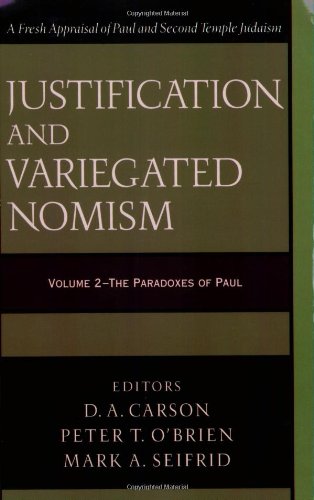A Brief “Bonus” Chapter Summary from Books At a Glance
By Nathan Sundt
About the Author
Mark Seifrid is a professor of Exegetical Theology at Concordia Seminary, St. Louis.
Overview
Chapter 4, “Unrighteous by Faith: Apostolic Proclamation in Romans 1:18–3:20,” engages with one of the New Perspective’s major emphases: (1) that Paul’s Damascus Road experience embodied a calling rather than a conversion and (2) that consequently the apostle knew first his “solution” (Jesus Christ) and needed to find the background “problem” against which this Lord Jesus could be preached. Mark Seifrid traces this emphasis to E. P. Sanders, arguing that in the opening of Romans, Paul moves neither from plight-to-solution nor from solution-to-plight; he “rather proclaims the “solution” in his thematic opening in Romans 1:16–17 and in that proclamation presupposes the human “plight which it addresses” (105). The proclamation of the gospel in these chapters “implicitly urges the acknowledgment of the human state which [Paul] subsequently describes” (105). Seifrid further emphasizes his thesis: “Whatever we might think about the way in which Paul came to his convictions, his argument in Romans 1:18–3:20 contravenes E. P. Sanders’s claim that Paul’s understanding of the human plight is secondary to his conviction that “Christ has come to be Lord of all” (106). Thus, Seifrid aims to demonstrate that the epistle’s opening argument “invalidates not only Sanders’s proposal, but also all converse schemes. The apostle does not begin with the message of Christ and from there seek to demonstrate that “all” are sinners, particularly not in the awkward manner that Sanders claims. But neither does [Paul] argue for the need of a savior from some prior demonstration of individual guilt, or from some accepted notion of Israel’s continuing exile, as a number have now argued in the wake of Sanders’s work” (106).
Martin Luther’s theologia crucis is evident when Seifrid claims that sin “for Paul is not a mere object of proof that might be accepted in argument, but the subject of proclamation that it [sic] is to be acknowledged in faith . . .” (106-107).
Seifrid sets forth a structural argument; that is, if he demonstrates “that Romans 1:16–17 contains in nuce the whole theology of the letter,” that “Paul’s argument is in a sense complete at Romans 3:26,” then the rest of the letter counts not as the introduction of new topics but the “elaboration and expansion of what [Paul] has said from the start” (107). That structural maneuver would foreclose New Perspective efforts to read the letter differently. Thus, the essay breaks down in structural terms: Romans 1:18–32; Romans 2:1–16; Romans 2:17–3:20.
The central question from the letter’s theme verses in 1:17–18 asks how the “revelation of God’s wrath account for the revelation of his saving righteousness?” (109). Seifrid argues: “This puzzle is further complicated in Romans 3:21 by Paul’s antithetical juxtaposition of. . .
[To continue reading this summary, please see below....]The remainder of this article is premium content. Become a member to continue reading.
Already have an account? Sign In
Buy the books

JUSTIFICATION AND VARIEGATED NOMISM (VOLUME 2): PARADOXES OF PAUL, edited by D. A. Carson, Peter T. O'Brien, and Mark A. Seifrid